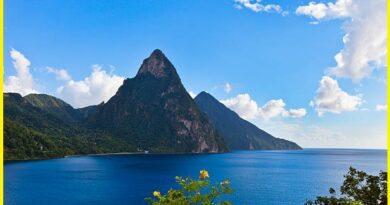Lava Lakes and Ice Towers: The Mysteries of Mount Erebus
Mount Erebus
Mount Erebus is an active volcano located on Ross Island in Antarctica. It is the southernmost active volcano on Earth and is known for its persistent lava lake, one of the few in the world. Erebus stands about 3,794 meters high and is famous for its frequent volcanic activity, including eruptions and the emission of gas and steam. The volcano was first discovered in 1841 by British explorer Sir James Clark Ross and named after one of his ships, HMS Erebus. Because of its remote location and harsh environment, Mount Erebus is primarily studied by scientists interested in volcanology, geology, and the unique microbial life that survives in extreme conditions.
The area around Mount Erebus is inhospitable, making it a challenging destination for adventure travelers and researchers alike. Would you like to know more about its volcanic activity, history, or scientific research conducted there?
Mount Erebus Lava Lake
Mount Erebus is renowned for its persistent lava lake, which is one of the few long-lived lava lakes in the world. The lava lake at Mount Erebus has been active for decades, possibly even centuries, and is located within its summit crater at an elevation of approximately 3,794 meters. This lava lake is unique because it remains in a molten state year-round despite the extreme cold of the Antarctic environment.
Key Features of Mount Erebus’s Lava Lake
Persistent Activity: The lava lake is a source of continuous volcanic activity, including small eruptions, frequent gas emissions, and occasional larger explosions. This persistent activity provides scientists with a unique opportunity to study volcanic processes in a relatively stable and continuous environment.
Temperature and Composition: The lava within the lake is primarily composed of phonolite, a type of silica-undersaturated volcanic rock. The temperature of the lava lake can reach around 1,000°C to 1,200°C.
Research Significance: The constant activity of Mount Erebus’s lava lake makes it a valuable natural laboratory for volcanologists and geologists. Studying the lava lake helps scientists understand magma convection, gas emissions, and the processes that maintain a lava lake over extended periods.
Accessibility and Observation: Due to its remote location in Antarctica, reaching Mount Erebus requires significant logistical planning. Researchers usually access the volcano by helicopter from nearby McMurdo Station. Observations are conducted using remote cameras, gas sensors, and sometimes direct measurements, although the harsh environment poses challenges.
Also read- Frozen Wonders: McMurdo Valley’s Unique Landscape
Unique Environment: The combination of an active lava lake in such a cold and remote region provides unique conditions for studying extreme environments. The volcanic gases and heat from the lava lake create a local microenvironment that supports extremophile microorganisms, which can survive in the extreme conditions of Antarctica.
Geology
Mount Erebus is the world’s southernmost active volcano and serves as the current eruptive center of the Erebus hotspot. Its summit is home to a persistent convecting phonolitic lava lake, one of only five long-lasting lava lakes on the planet. The volcano’s typical activity involves Strombolian eruptions, which occur either from the lava lake or from several subsidiary vents located within its inner crater. What makes Mount Erebus scientifically remarkable is its relatively low-level yet consistent eruptive activity, allowing for extensive, long-term studies of a Strombolian eruptive system at a close range, just a few hundred meters from the active vents. This feature is rare and shared with only a few other volcanoes worldwide, such as Stromboli in Italy. Additionally, its proximity to McMurdo Station (U.S.) and Scott Base (New Zealand), situated on the same island about 35 kilometers away, facilitates scientific research.

Ice Fumaroles
Reaching Mount Erebus is a challenging endeavor due to its remote location in Antarctica and extreme weather conditions. Access to Antarctica and Mount Erebus requires special permits due to international regulations under the Antarctic Treaty System. Researchers typically apply through their respective national Antarctic programs.
Join an Expedition: Most people who visit Mount Erebus do so as part of a scientific expedition. You’ll need to be affiliated with a research institution or organization or join a specialized adventure tour (if available, but these are rare and often limited to observation from a distance rather than actual ascent).
Departure Points: Most expeditions to Antarctica depart from New Zealand (Christchurch), Australia (Hobart), Chile (Punta Arenas), or Argentina (Ushuaia). Flights to Antarctica: You will fly to a research station on Ross Island, such as McMurdo Station (operated by the U.S.) or Scott Base (operated by New Zealand). These flights are typically conducted by military aircraft such as the C-17 Globemaster or LC-130 Hercules, which are equipped to handle the harsh Antarctic environment.
Arrival at Ross Island- Upon arriving at either McMurdo Station or Scott Base, you will acclimatize to the conditions and undergo safety briefings and training. These bases are located about 35 kilometers (22 miles) from Mount Erebus.
Journey to Mount Erebus
Helicopter Transport: The most common way to reach the lower slopes of Mount Erebus is by helicopter. Helicopters are used to transport researchers and equipment from the bases to the volcano, as the terrain and weather conditions are too extreme for ground vehicles. Snowmobiles or Hiking: In some cases, snowmobiles or skis may be used to travel over shorter distances on the volcano, depending on the specific location of the study or observation site.
Climbing Mount Erebus- Climbing Mount Erebus is technically demanding and requires experience in glacier travel, crevasse navigation, and high-altitude mountaineering. Only experienced climbers, often scientists, undertake this ascent, and even then, only in teams with adequate support and safety measures.



